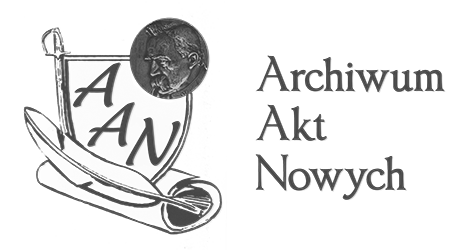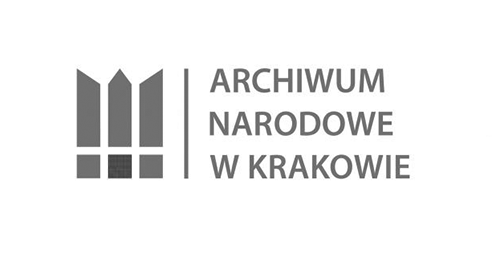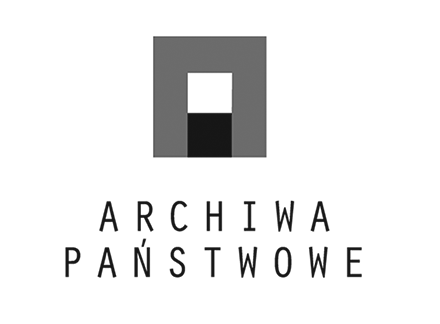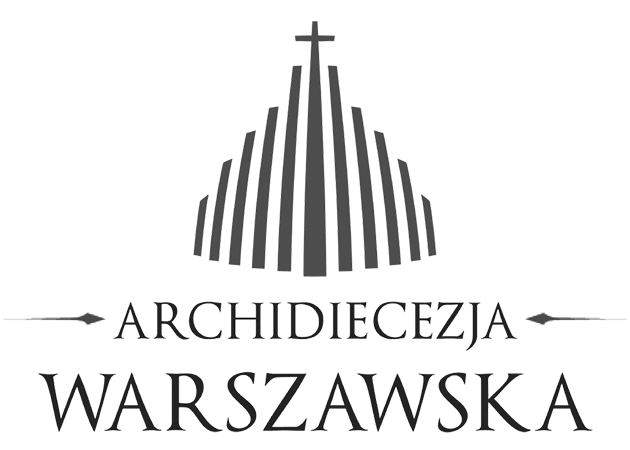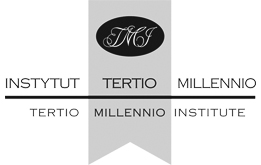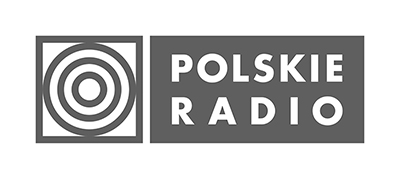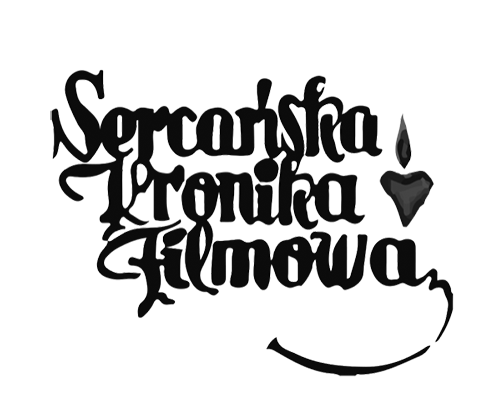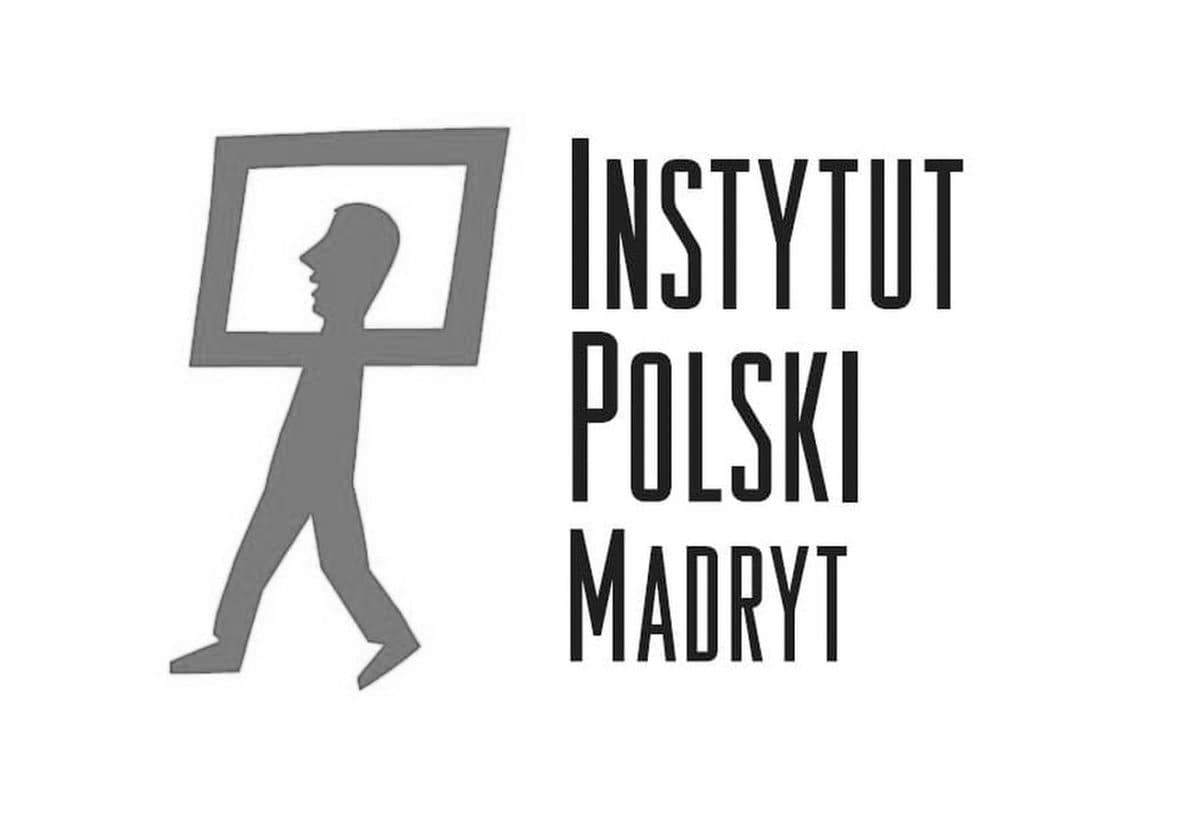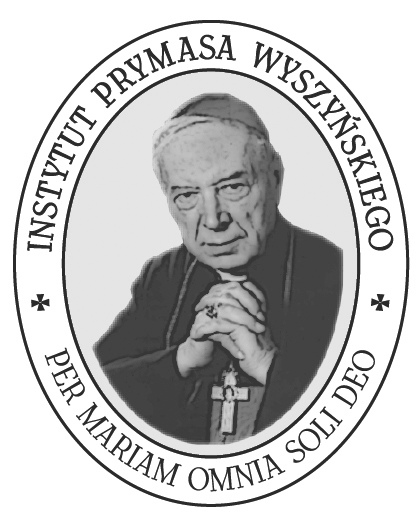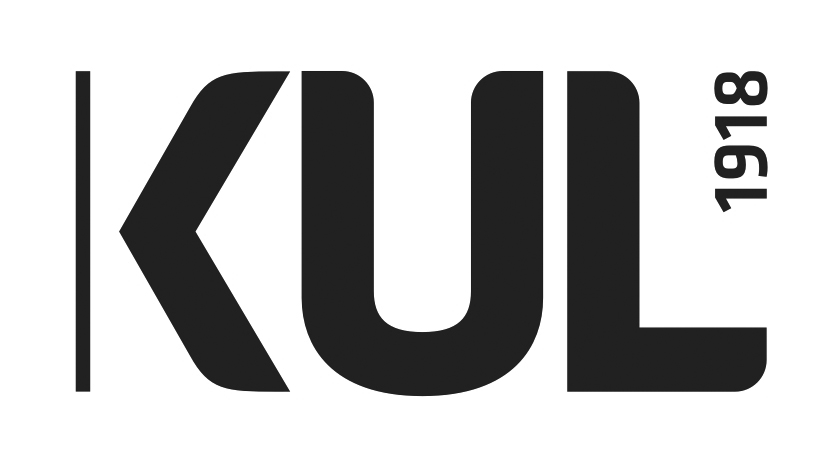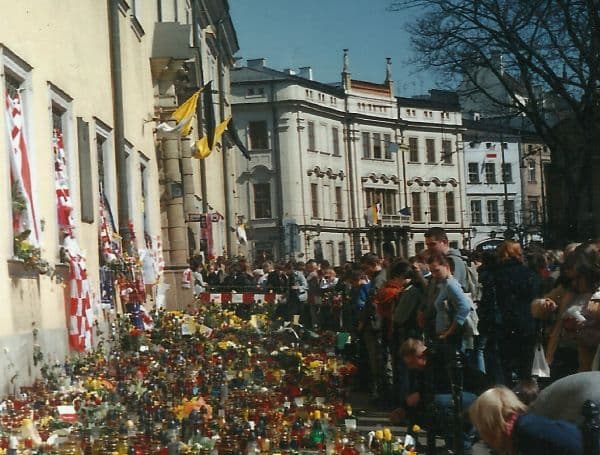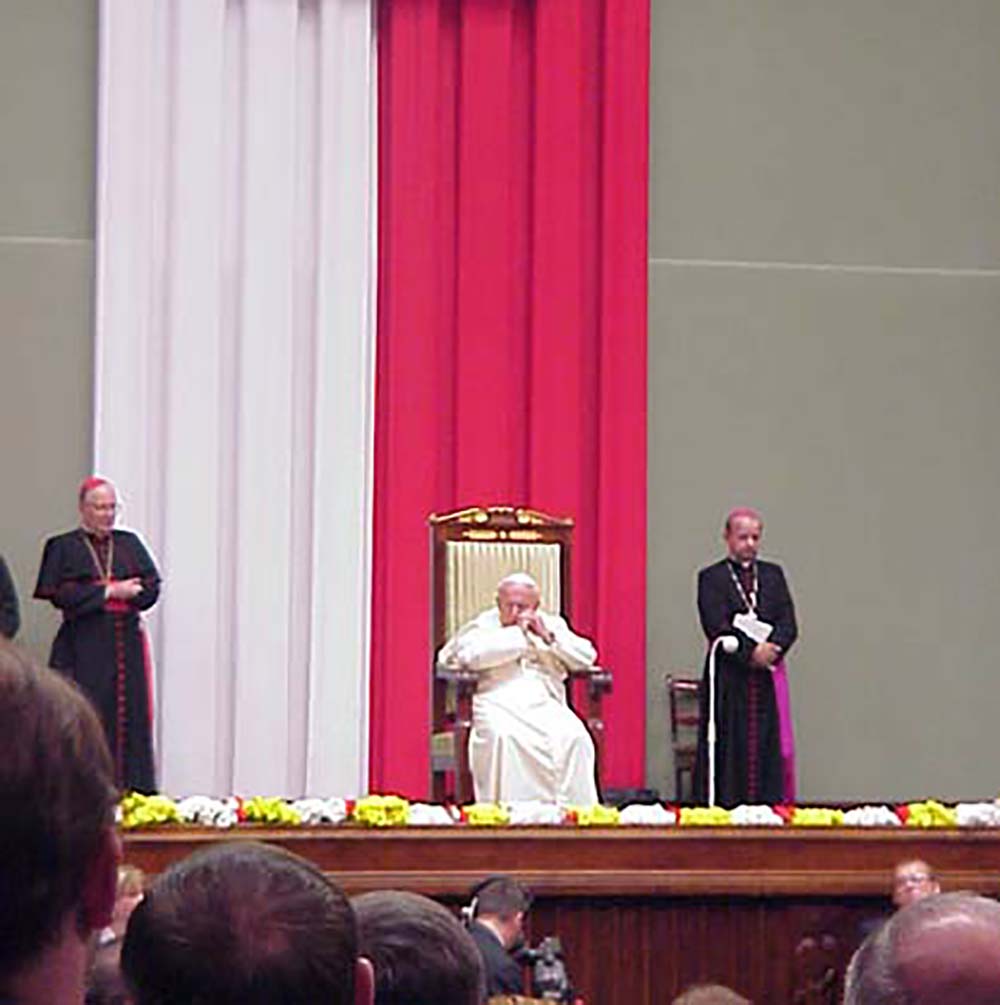John Paul II and the Galileo affair
“Reconciliation between science and faith” is what John Paul II expected when he encouraged scientists to address the Galileo affair. He considered the Galileo myth to be one of the key ones for building up the belief in the conflict between the Church and the scientific world.
Galileo Galilei in a painting by Justus Sustermans, circa 1637.
Drag timeline
1543
Edition of Nicolaus Copernicus' De revolutionibus orbium coelestium.
December 1613
Galileo wrote the first of the so-called Copernican letters, a series of letters in defence of the compatibility of the Copernican system with Scripture. The largest of these - to the Tuscan Duchess Christina Lorraine - was written in 1615.
24 February - 5 March 1616
Censure by the Tribunal of the Holy Office against the heliocentric theory. Admonition of Galileo by Cardinal Robert Bellarmine not to teach the heliocentric theory as true. The inclusion of Nicolaus Copernicus' De revolutionibus orbium coelestium on the index of forbidden books until corrections are made.
February 1632
Galileo's publication of his “Dialogue on the Two Most Important Systems of the World: the Ptolemaic and the Copernican”. Galileo put the views of Pope Urban VIII into the mouth of one of his interlocutors, which was seen as an insult to the Holy Father. The Inquisition considered that the work presented the heliocentric theory as fact.
June 1633
The trial and the sentence for Galileo: life imprisonment under house arrest and weekly recitation of seven penitential psalms. The sentence was soon changed to three years' imprisonment. Galileo served his sentence in very good conditions. He was able to continue his scientific work. Galileo's "Dialogue" goes on the index of banned books.
8 January 1642
Galileo dies in a private villa in Arcetri, near Florence. He remained under the supervision of the Inquisition for the rest of his life.
1835
Removal from the index of banned books of Galileo's ”Dialogue” defending the Copernican theory.
10 November 1979
John Paul II's speech addressing the Galileo affair. The Pope said, among other things: "I express the wish that theologians, scholars and historians, in a spirit of sincere cooperation, may deepen their knowledge of the Galileo affair (...) so that in this way an end may be put to the objections which may still be aroused in many minds - and through this a consensus may be reached between science and faith".
May 1981
John Paul II's appointment of a commission to investigate Galileo.
31 October 1992
Ceremonial conclusion of the commission's work. The Pope stated, among other things: "The knowledge that we draw from the most recent historical research allows us to conclude that this painful misunderstanding is now a thing of the past. The Galileo case can become a lesson for us too, useful for analogous situations that exist today or may arise in the future".
Sentence on Galileo
In February 1616. The Holy Office censured Copernicus' claims. The thesis that the Sun is the centre of the universe and is "immobile in relation to local motions" was declared "nonsensical and absurd" and heretical "as being in clear contradiction to the teaching of Holy Scripture". The thesis that the Earth is neither the centre of the world nor immovable was called equally absurd from the point of view of philosophy, and from the point of view of theology "at the very least an error in the faith".
At this time, there was a disciplinary meeting between the Inquisitor, one of the greatest theologians of the time, Cardinal Robert Bellarmine, and Galileo Galilei, who preached the heliocentric theory in his works. The Inquisition prepared a document whereby Galileo Galilei was to renounce “entirely the said view that the Sun was in the middle of the world and immobile, and the Earth was in motion, and never to repeat it again”. Galileo never signed this document. Both Galileo and Bellarmine later claimed that he was only instructed at the time not to teach the heliocentric theory as true.
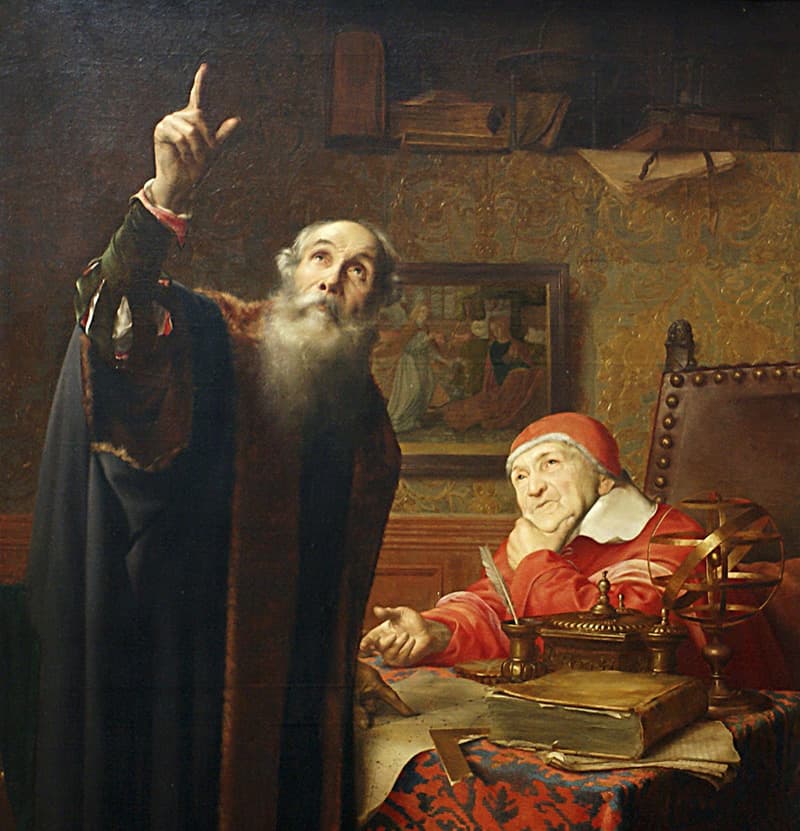
A fragment of a painting by the 19th century painter Edmund van Hove, depicting a conversation between Galileo Galilei and Pope Urban VIII.
After his conversation with Cardinal Bellarmine, Galileo respected the instruction for 16 years. It was only in 1632 that he decided to publish a dialogue defending the Copernican system, counting on the favour of Pope Urban VIII, with whom he had had many friendly conversations. He received permission in Rome to publish the work. Galileo, however, had influential opponents in the scientific world and among the clergy. They soon prevailed and in 1633 the astronomer appeared before the Holy Office accused of disobeying church authorities and spreading false evidence of the Earth motion.
The Inquisition found that Galileo had disregarded its instruction of 1616. He was sentenced to life imprisonment and the obligation to recite seven penitential psalms once a week. The sentence was soon commuted to three years' imprisonment. He served it first in the palace of the Tuscan princes, then as a guest of the Archbishop of Siena, and finally in a private villa in Arcetri near Florence. He had to renounce publicly his beliefs in the veracity of the heliocentric theory. Although he did not whisper under his breath the famous "And yet it turns!", he did warn theologians in a private copy of the forbidden dialogue on world systems that the time might come when those who denied the movement of the Earth would be condemned as heretics.
In 1822 the Holy Office issued a decree that anyone who would forbid the defence of Copernicus' theory would be punished. Galileo's prophecy almost came true.
Rehabilitation?
John Paul II devoted much attention to the cause of Galileo. He first publicly invoked the great astronomer on 10 November 1979 during an address on the 100th anniversary of Einstein's birth. In it, he expressed regret that the Church had not always granted the proper autonomy to the natural sciences. He also acknowledged that Galileo had suffered a great deal from the people and institutions of the Church. However, contrary to popular opinion, persistently repeated by the media, John Paul II did not apologise for the suffering inflicted on Galileo, let alone rehabilitate him. Regret for the errors in the Galileo case had already been expressed by the Second Vatican Council in its constitution “Gaudium et Spes”. In turn, the rehabilitation of the astronomer's views occurred in the Church in the first half of the 19th century, when his works disappeared from the index of banned books. Besides, John Paul II was well aware that in the eyes of the world it was the Church, rather than Galileo, that needed rehabilitation.
In 1981, at the request of Pope John Paul II, a Galileo Commission was set up with the aim of “considering the whole question of Galileo fairly, based on historical sources and taking into account the doctrines and culture of the time”. Its work resulted in 11 books and a thematic publication series, and the opening up of the archives to scholars outside the commission resulted in many other publications. The solemn conclusion of the commission's work came in 1992, with Pope explaining exactly why he persisted in returning to a matter that seemed long since closed.
Firstly, it was a matter of establishing the proper boundaries of competence for the natural sciences, philosophy and theology, and the proper relationship of these fields of reflection on reality. Secondly, John Paul II called for a crackdown on the myth of Galileo, who since the Enlightenment had been “a symbol of the Church's alleged rejection of scientific progress”. "The tragic mutual misunderstanding has been interpreted as an expression of the constitutive contradiction between science and faith".
Myth
Many myths have grown up around Galileo. He became, in the popular consciousness, the crown proof of the Church's hostility to science. Modern, secularising Europe was the birthplace of a new faith - a faith in science, which many thinkers believed would explain the world to people and give them happiness. Some of the philosophers of the Enlightenment believed that this meant an inevitable conflict with the hitherto dominant Christianity. They knew well that in order to gain the upper hand in this conflict, they needed to have, like the Church, their symbols, their banners and their martyrs. In this context, the myth of Galileo Galilei as a martyr for science was spreading. Voltaire put it this way: “(...) the great Galileo, at the age of eighty, passed the rest of his days in the dungeons of the Inquisition, because he had conclusively proved the motion of the Earth”.
None of this is true. Galileo did not live to the age of eighty, he probably did not spend a single minute in the prison of the Inquisition, and his evidence of the Earth's motion was not only inadequate, but often outright false. To this day, there is a widespread misconception that Galileo was tortured by the Inquisition (this was claimed by 97 per cent of students from all EU member states surveyed in a study organised by the European Parliament). There is no shortage of those who claim that the great astronomer was burned at the stake (almost a third of those surveyed).
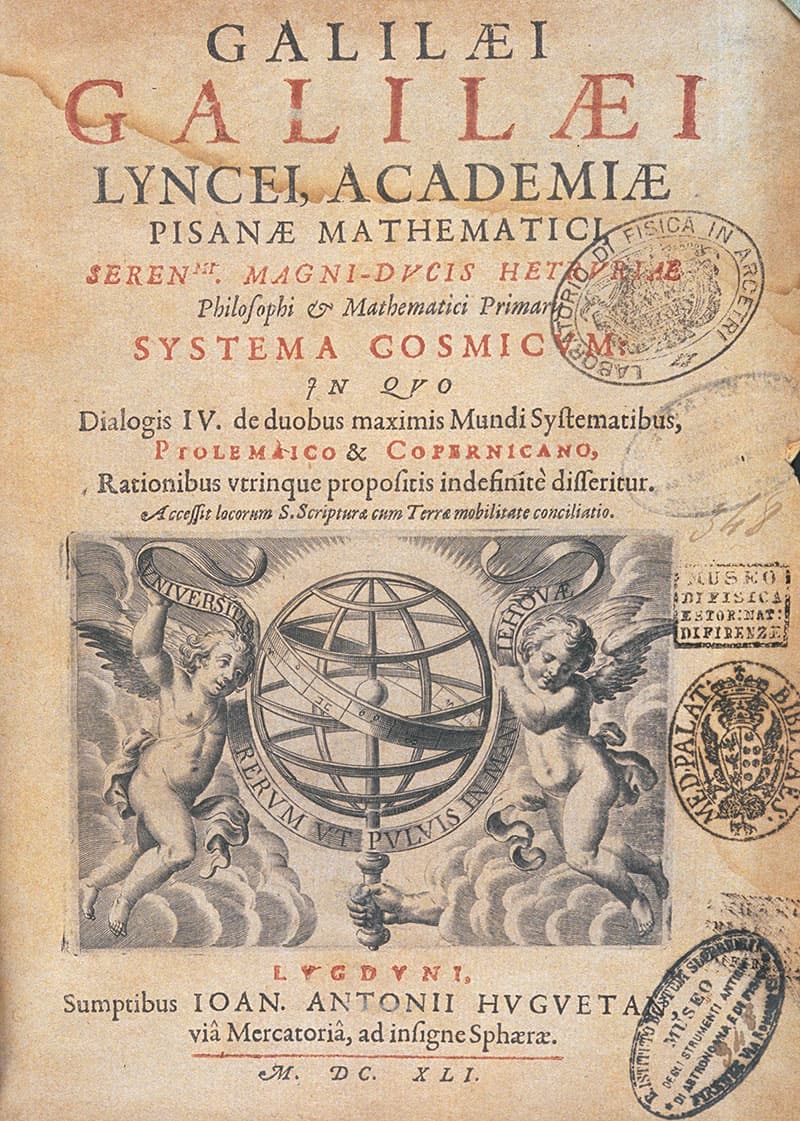
Title page of Galileo's most controversial book Dialogue on the Two Most Important Systems of the World: the Ptolemaic and the Copernican, published in Lyon in 1641 (8 years after the final judgment of the Inquisition).
The Church did indeed hurt Galileo and discussions about the magnitude of this hurt do not touch the core of the problem. The essence of the myth is deeper than the mere misrepresentation of the facts about the trial and sentence. In Enlightenment propaganda, the colouring of the story was intended to create a vivid opposition between an allegedly extremely brutal Inquisition and a vulnerable brilliant scientist. It is to show these events in black and white, as a battle between Galileo Galilei - a representative of the world of pure science and a proclaimer of self-evident truth - and the Inquisition - a symbol of mindless faith and medieval darkness. Meanwhile, Galileo saw no shadow of contradiction between science and faith, and the Roman Inquisition defended a view still widely accepted in the scientific world.
The lost order
In the 90 years between the publication of De revolutionibus orbium coelestium and the verdict on Galileo, the Copernican theory still failed to convince the entire scientific community. Still, the common belief among scientists was what seemed obvious to any simple observer of the sky: celestial bodies move around a stationary Earth. A scientific model of the universe based on this belief was created in the 2nd century by Ptolemy. Increasingly accurate observation of the sky meant that more and more complex models had to be created to explain the movement of the planets and stars around the Earth. Against this background, the Copernican system was extremely elegant and simple, but far from a correct representation of the rotation of the celestial bodies. Over the next four decades, only a few people in the world accepted the theory as true. Later, further discoveries and calculations, especially by Galileo Galilei and a few years younger Johannes Kepler, made the heliocentric theory increasingly plausible. Among Galileo's contemporaries, however, eminent scholars rejected it, including Francis Bacon, considered alongside Galileo to be one of the founders of the modern scientific method.
Copernicus' theory greatly facilitated astronomical calculations, but at the same time it seemed to turn the entire generally accepted view of the world upside down. Ptolemy's system confirmed the picture of the world outlined by Aristotle - the greatest philosophical authority of the time. In it, the cosmos was divided into two parts: the sublunar - transient, and the superlunar - perfect. Aristotle's views, in turn, became the basis of the philosophy of St Thomas, which had such a profound influence on the doctrine of the Catholic Church that the consequences of its undermining were difficult to predict. Besides - and most importantly for Galileo's case - the belief in the centrality of the Earth in the universe seemed to be confirmed by Scripture. "The sun rises and sets, and hastens back to its place" (Koh 1.5), "It [the sun] rises at the end of the sky and runs as far as the other end" (Ps 19.7) or "The sun stopped in the middle of the sky" (Josh 10.13) - these quotations from the Old Testament were important arguments for the proponents of the geocentric theory.
The Ptolemaic view of the universe was imperfect, but the accepted one seemed to reconcile science, philosophy and theology. It is hardly surprising that Galileo's attempts to challenge it were met with resistance. In 1614, his scientific adversaries persuaded the famous Dominican preacher, Tommaso Caccini, to deliver a sermon in Florence against the “sect of mathematicians”, of which the great astronomer was said to be a leading representative. Galileo faced accusations of heresy.
Galileo's theology
For Galileo, the contradiction between what he believed to be the infallible Bible and proven scientific truths was inconceivable. He therefore had to confront his belief in the movement of the Earth with a well-established interpretation of Old Testament passages. He faced this problem in December 1613. At a breakfast at the home of his former pupil, the Grand Duke of Tuscany, a discussion arose with invited scholars on the compatibility of the heliocentric theory with Scripture. The Duke's mother, Christine of Lorraine, doubted whether the new theory could be reconciled with the description of the miracle of the sun's arrest contained in the Book of Joshua. Galileo, when he learned of his patroness's doubts, wrote a letter explaining his position: "Scripture can never lie or err, always pronouncing absolute and indisputable truth. (...) however, they can err - and in many ways - some of those who interpret Scripture".
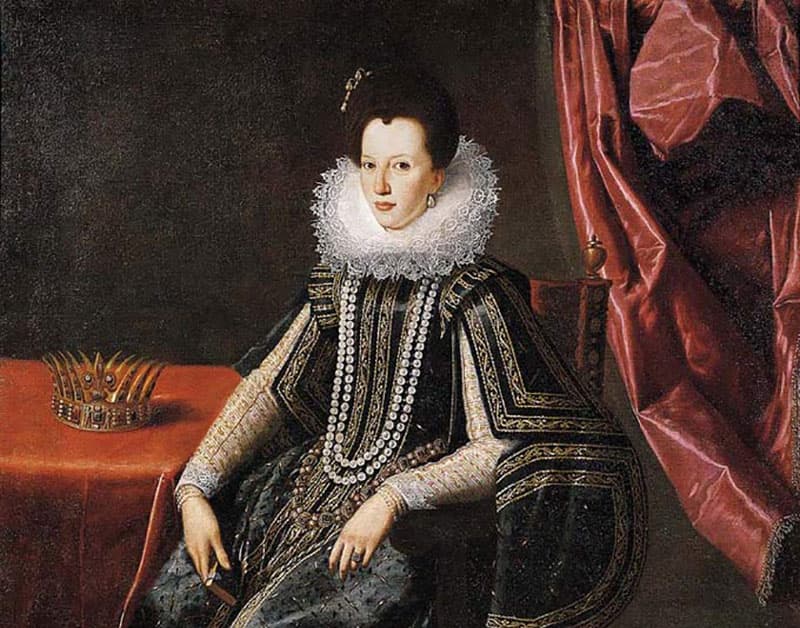
The Grand Duchess of Tuscany, Cristina Lorraine, corresponded with Galileo on scientific subjects.
Unlike her husband, Prince Ferdinand I, she was not enthusiastic about the heliocentric theory. Painting by Tiberio Titi.
Unlike her husband, Prince Ferdinand I, she was not enthusiastic about the heliocentric theory. Painting by Tiberio Titi.
This letter caused Galileo a great deal of trouble. In it, he outlined what he considered to be the proper relationship of the natural sciences to Scripture. Among other things, he wrote that many passages in the Bible cannot be interpreted literally if one does not want to fall into heresy. In such cases, one must adopt a figurative meaning, referring to spiritual matters. It is precisely matters of faith that constitute the proper object of biblical revelation, while the laws of nature are to be studied by observing the workings of nature, in which "God reveals himself no less wonderfully than in the sacred statements of Scripture". Therefore, in discussions of natural problems, the literal meaning of Scripture "must be taken last", since the language of the Bible is ambiguous and nature is "inexorable and unchanging in the laws given to it". Moreover - as he later explained in a letter to Duchess Christina Lorraine - only by proving with certainty the laws of nature can it be possible to interpret correctly those passages of Scripture which refer to physical phenomena.
This may have seemed to place the natural sciences above theology. Galileo, however, recognised the 'royal dignity of theology' among the sciences, only he understood it differently from many of his contemporaries. According to him, the dignity of theology was based on the nobility of the subject matter of that science. He opposed the notion that theology, as the highest science, could decide the truth of the theses of other disciplines without applying their methodology. Such a hard separation of theology from other sciences - nowadays generally accepted - was opposed by the Church authorities.
False evidence
Galileo's letters on the compatibility of heliocentrism with Scripture were public knowledge. They became the subject of consideration by the highest dignitaries in the Church. Cardinal Robert Bellarmin, among others, dealt with them. In a letter to another supporter of heliocentrism, the Carmelite Paolo Foscarini, he acknowledged that if the movement of the Earth around the Sun were to be proved, it would be necessary to revise the previous interpretation of those passages of Scripture which seem to testify to the movement of the Sun. "I, however, do not believe in the existence of such proof until it is presented to me," he wrote.
Galileo argued in a letter to Duchess Christina that it was possible to base heliocentrism on “obvious experiments and irrefutable evidence”. However, he was unable to provide such evidence either in his letters, in his publications or in his conversations with scientists during the Inquisition enquiry. His observations of the spots on the Sun, the moons of Jupiter or the phases of Venus were ground-breaking, but did not provide evidence for the movement of the Earth (this was not presented until two centuries after Galileo's death). In a dispute with scientists at the College of Rome, Galileo claimed that it was possible to produce such evidence from observations of sea tides, but relied on a misinterpretation of the phenomenon.
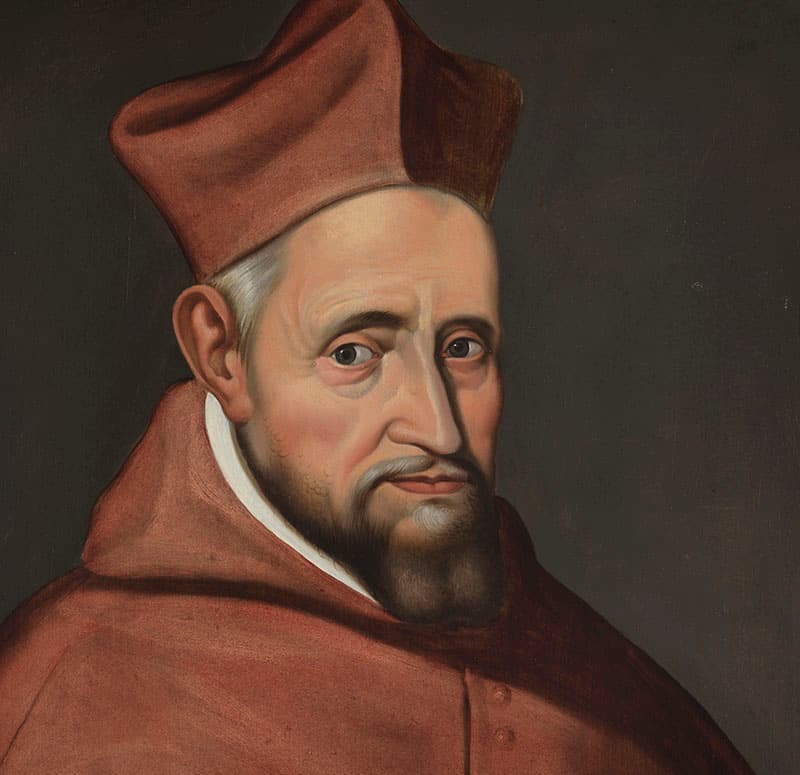
Cardinal Robert Bellarmin warned Galileo not to teach heliocentrism as a proven theory but merely a hypothesis.
Portrait from the 17th century, painter unknown.
Portrait from the 17th century, painter unknown.
On this basis, Bellarmin recommended to the proponents of heliocentrism that they treat their theory as a hypothesis and use it only as a model to facilitate calculations in astronomical observations. In a letter to Fr Foscarini, Bellarmin wrote: "when in doubt, one should not abandon the Scriptures laid down by the holy Fathers". There was a rule in the Church that the general consensus of the Church Fathers of the first centuries of Christianity in interpreting a passage of Scripture was binding. The Church Fathers thought the same thing about the Sun's movement around the Earth as all their contemporaries - that it was self-evidently true. Galileo argued that the Fathers, in writing about the movement of the Sun, were not speaking as teachers, but merely repeating a common view. However, the arguments fell on deaf ears. Galileo, as a lay person not professionally involved in theology, could not hope to be listened to on the matter.
In 1616. The Church forbade convincing people of the veracity of the heliocentric theory - as unproven and contrary to the traditional interpretation of Scripture. Galileo was condemned to silence on the issue dearest to him. When he nevertheless tried to speak on it, he was punished with imprisonment.
Mutual misunderstanding?
Publicists cite many arguments in the Church's defence. It is recalled that the scholar was treated leniently. While serving his sentence in palaces and a private villa, he received scholars and conducted research. The sins of Galileo, who himself ordered his minor daughters to be locked up in a convent against their will, are drawn out. It is explained that the conduct of the Inquisition was in keeping with the spirit and needs of the times - secular courts in the 17th century followed similar, and often much harsher, standards. He also argues for the superiority of scientists associated with the Inquisition, who rightly challenged the great astronomer's alleged evidence for the movement of the Earth.
All this cannot, however, obscure the facts incriminating the Church. The Inquisition obstructed scientific research that was supposed to lead to the confirmation of an increasingly plausible hypothesis. Scientists who proclaimed it were violently shut out. The traditional interpretation of Scripture was used as an argument in a scientific dispute, ignoring Galileo's more prudent approach to the issue.
John Paul II's words about a “tragic mutual misunderstanding” may therefore seem unfair. They seem to put an equal sign between the conduct of the Church and Galileo in this conflict. John Paul II, however, was far from trying to defend the Church or accuse Galileo. What the Pope wanted was an in-depth view that tries to penetrate the rationale of both sides - even if one of them was more right. Such an insight allows one to understand that the Galileo case has nothing to do with the myth of conflict between the scientific world and the Catholic Church. Indeed, the judgement of the Inquisition did not stem from hostility to science, but - among other things - from a misunderstanding of the relationship between science and theology. Galileo Galilei, who made scientific errors in this matter, paradoxically demonstrated himself precisely in the field of theology, being ahead of his time in terms of his methods of interpreting the Bible. This founder of modern science wrote letters that were essentially treatises on the relationship between theology and the natural sciences, and at the end of his life he said: "In none of my works can anyone find even a shadow of anything that is derogatory to the honour and esteem of the Holy Church". In this light, it seems that he would have preferred, after his death, to patronise attempts to reconcile the new discoveries of science with the truths of the faith, rather than trying to create an artificial conflict between the world of science and the Church.
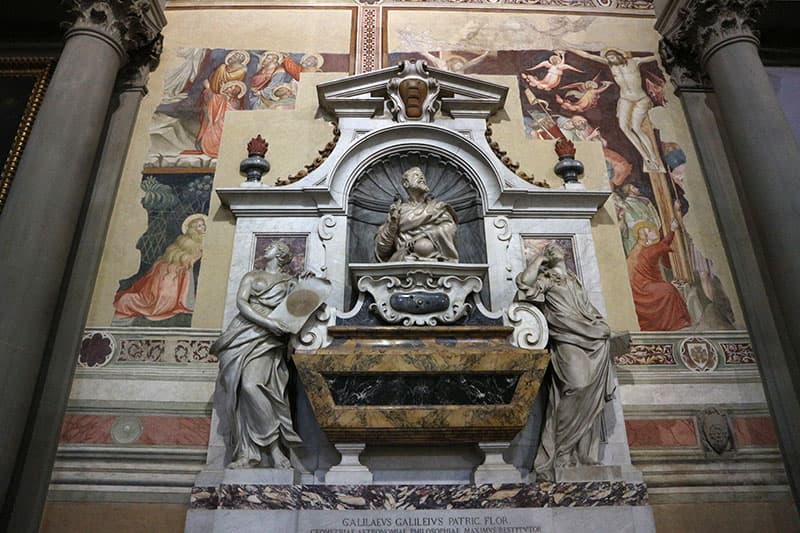
Galileo's tomb located in the Franciscan church of Santa Croce (Holy Cross) in Florence. Photo: GiadaE (Wikipedia)
Sources
Audio Records
Video Records
Documents
Audio Records
Event Place
Choose location...
Basilica of Santa Maria sopra Minerva in Rome
Galileo's villa in Arcetri (now a district of Florence)
Palazzo Pitti in Florence
Keywords
Persons index:
Project implemented by: 

Project co-financed by: 

Patronage: 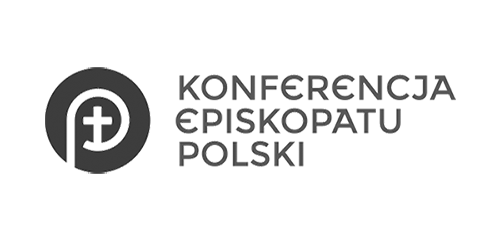

Partners: 